| Day 6 Xian ( B,L ) |
| Continue our tours in Xian. |
Great Mosque | The Great Mosque is one of the largest and best-kept Islamic mosques in China, which was originally built in 742 AD during the Chinese Tang Dynasty(618-907). It combined Islamic culture with Chinese traditional architecture seamlessly and became most featured and renowned mosques in China. | Ancient City Wall | It is the most well-preserved ancient military defensive systems in the world. It is composed of the moat, hanging bridges, battlements, watchtowers, tunnels and parapet. Today, the roadway is a promenade enjoyed by strolling tourist. Cycling on the wall with families is a great thing! | Shaanxi Provincial History Museum | It is one of the Top 3 national museums in China. This museum boasts 370,000 pieces relics range from prehistory when human just used simple stone tools to exquisite wares in the Qing Dynasty (1644–1911)., and enables you to see the vast changes of China in the past 5,000 years. |
|
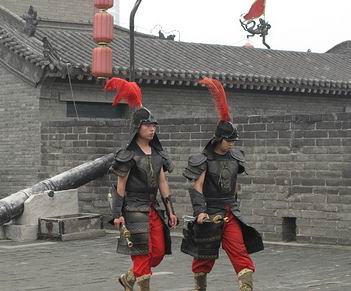 |
| [ Optional ] Muslim quarter: The Muslim Quarter features a mix of Chinese and Islamic cultures. It wins the reputation for the alley lined with market stall and the tasty snack food. Meanwhile, it is a good place to head for when looking for those hard-to-find souvenirs. |
|
| Day 7 Xian, Lhasa ( B,L ) |
| Transfer to Xian airport for your flight to Lhasa. Upon arrival at Lhasa airport, pickup by our English speaking tour guide and drive to hotel. Free at leisure to acclimatize yourself to the high latitude.
|
Lhasa | Lhasa has an elevation of 3650 meters and sits at the center of the Tibet Plateau. It has a history of more than 1300 years. It towers as a huge magnet attracting those who want to explore its culture. Entry into Lhasa allows each traveler the chance to glimpse into Tibet. |
|
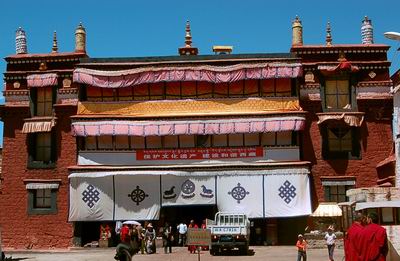 |
| [ Optional ] Ramoche Monastery: it is one of the key cultural relic protection sites in Lhasa, located on the north of Barkhor Street, in the area with a local market and many traditional style Tibetan style civilian houses. |
|
| Day 8 Lhasa ( B,L ) |
| The rush hour of Potala Palace is 10am, so we highly recommend to register and visit it in the early morning, otherwise you might only see the crowd. Plenty time to stay around the Jokhang Monastery and the Barkhor Street in the afternoon. |
The Barkhor Street | The Barkhor Street is Lhasa's inner pilgrim circuit shaped roughly like an octagon that runs around the Jokhang. The circuit is lined with markets, shops, stalls and street vendors providing every conceivable item a Tibetan could need. The best place to start the circuit is right outside the Jokhan…… | The Jokhang Temple | The Jokhang Temple is the spiritual centre of Tibet - a destination for millions of Tibetan pilgrims. The oldest part of the temple dates back to the 7th century AD - being one of the two temples built by King Songsten Gampo to house the statues of the Buddha that his two foreign wives brought to Ti…… | The Potala Palace | The Potala Palace is a landmark of Lhasa and Lama Buddism. It is a 13 storey and 1000 rooms' palace and once winter residence of the Dalai Lama. The construction of the present structure began during the reign of the fifth Dalai Lama in 1645 and took more than 50 years to complete. |
|
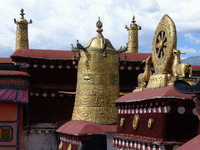 |
| [ Optional ] Lhasa Carpet Factory: Lhasa Carpet Factory is a factory south of Yanhe Dong Lu near the University of Tibet in Lhasa the capital of Tibet. It produces traditional Tibetan rugs. The highland of Tibet is the actual home of the oriental carpets. By visiting Carpet Factory you will have a general idea of how carpets are produced. |
|
| Day 9 Lhasa ( B,L ) |
| Visit Sara Monastery and the Tibten Museum. In the afternoon, a visit to the local Tibetan family is a happy memory. Please prepare some gifts for this family visit, such as candy or chocolate for kids. |
The Tibet Museum | The Tibet Museum, located in the southeastern corner of Norbu Lingka, Lhasa, is the first of its kind in Tibet to be provided with the latest in equipment and facilities. The Tibet Museum was completed and opened in October 1999. | Tibetan Family Visit | Every Tibetan family has been either directly or indirectly affected by the Chinese, Indian and Nepal culture. Family life is one of the most interesting attractions during your stay in Tibet. Common Tibetan people welcome you to their homes, greet you in their traditional way and entertain you with…… | The Sera Monastery | The Sera Monastery lies on the northern edge of Lhasa at the base of Tatipu Hill. 'Sera' means 'merciful hail' denoting its rivalry with the 'Rice Heap' (Drepong) since hail destroys rice. Sera was smaller than Drepong with about 7,000 monks but was very rich and comparable in power. |
|
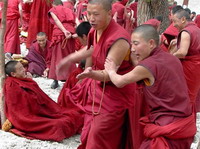 |
| [ Optional ] Norbulingka: The Norbulingka Park: Norbulingka means "Jeweled Garden". It was constructed as a summer palace for the Dalai Lama at the very beginning and later served as the whole governmental administration. |
|
| Day 10 Lhasa, Chengdu ( B,L ) |
| Transfer to Lhasa airport for your flight to Chengdu. Upon arrival at Chengdu airport, pickup by our English speaking tour guide and drive to visit in Chengdu. |
JinLi Street | Jinli Street in Chengdu, Sichuan Province, was in ancient times one of the busiest of commercial boulevards of the Kingdom of Shu. | Wenshu Monastery | Wenshu Monastery was originally built at this site in the north of the city during the Tang Dynasty. The building today however is a Qing Dynasty construction consisting of an impressive collection of buildings containing some intricate and beautiful art and architecture. | Temple of the Marquis of Wu | The Temple of the Marquis of Wu (Wuhou Ci) is located in the outskirts of Chengdu, there is a large temple here containing a statue of Zhu Ge and an impressive Three Wonders Tablet, so called because it contains exquisite examples of calligraphy, carving and poetry. |
|
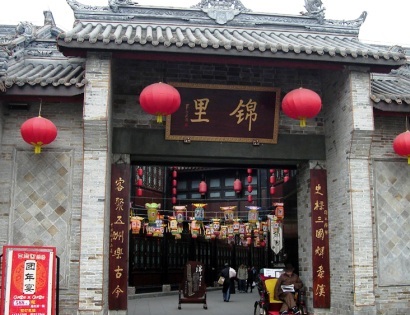 |
| [ Optional ] Wide and Narrow Alleys: Wide and Narrow Alleys is a region of three major historical and cultural protected areas, it is known as a "Millennium small Old Chengdu". it is aslo a leisure center for people to relax having some quality time with friends in the mixed old and modern atmosphere. So inside those nicely restored old houses, there are restaurants, pubs, tea houses, coffee shops and stores etc. |
|